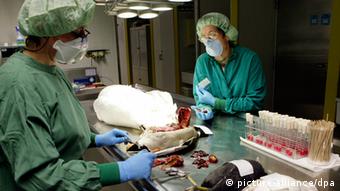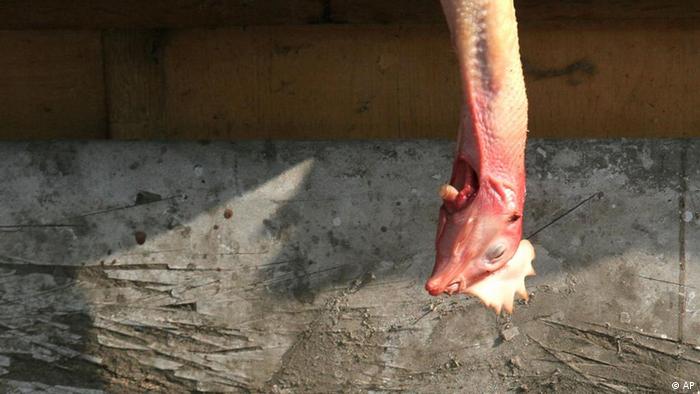Sonny Inbaraj Krishnan, the WHO's communications officer, said Wednesday, January 30, that the organization remained concerned at the deaths from H5N1, which is better known as avian flu.
"These are the first cases globally this year," he said.
Avian flu was first reported in Cambodia in 2005 when four people died. The highest annual toll was in 2011 when eight Cambodians died.
H5N1 is extremely dangerous once it jumps from poultry to humans. Worldwide it has killed 364 people out of 615 infected since 1997.
Although there have been no proven cases of human-to-human transmission, Krishnan said, experts fear H5N1 could undergo a recombination and re-assortment with another influenza virus.
"And that could give rise to a new virus that is transmittable between humans," he said.
Children at risk
Seventeen of Cambodia's 26 confirmed infections have occurred in children, the Ministry of Health said Tuesday. The victims who died on Monday were a 1-year-old girl and an 8-year-old girl. Earlier this month the disease claimed a 15-year-old girl and a 35-year-old man. The fifth person infected, a baby, recovered.
In response, the authorities have sent teams to the villages where the victims lived, culled thousands of chickens and ducks, and sprayed disinfectant.
Minister of Health Mam Bunheng said parents must tell their children to wash their hands and keep them away from areas where poultry live.
"If [children] have difficulty breathing, they should be brought to medical attention at the nearest health facilities and attending physicians be made aware of any exposure to sick or dead poultry," Mam Bunheng said.
The WHO's Krishnan said health teams have monitored the condition of people who came in contact with the victims, adding that all had tested negative for the virus. The government has also boosted the number of television and radio spots warning of avian flu and telling people how to protect themselves, and staff at health clinics in the affected provinces will receive refresher training on avian flu in February.
Population influx
However, two imminent events will add to the challenges of containing the spread of the disease.
The first is the February 4 cremation of Norodom Sihanouk, the country's revered former king, in Phnom Penh. The government expects that more than a million people will travel to the capital to pay their respects. Many will bring food, including live poultry.
The other is Chinese New Year on February 10. In preparation for the festival, large numbers of chickens and ducks are usually transported ahead of that date to markets in the cities and towns.
Either event could promote the spread of the disease. On Tuesday, government and UN health experts met to work out how best to prevent that. Krishnan said officials would hand out information leaflets to people coming to the capital to warn them of the risks and advise them how to avoid contracting the disease. That includes not eating birds that have died from illness, and cooking poultry thoroughly.
Most of the efforts underway are designed to ensure that people do not get infected with avian flu in the first place. Once they do, the chances of recovery are slim - not least due to the country's weak healthcare system. In total, 23 Cambodians out of 26 infected to date with avian flu have died - a fatality rate close on 90 percent, and well above the global figure of nearly 60 percent.
Krishnan said part of the problem is that Cambodians typically first seek medication at their local pharmacy or private clinic. That costs precious days. Given that H5N1 can kill in around a week, by the time patients arrive at hospital "the chances are slim that they will survive."..http://www.dw.de/bird-flu-spreads-in-cambodia/a-16559672

